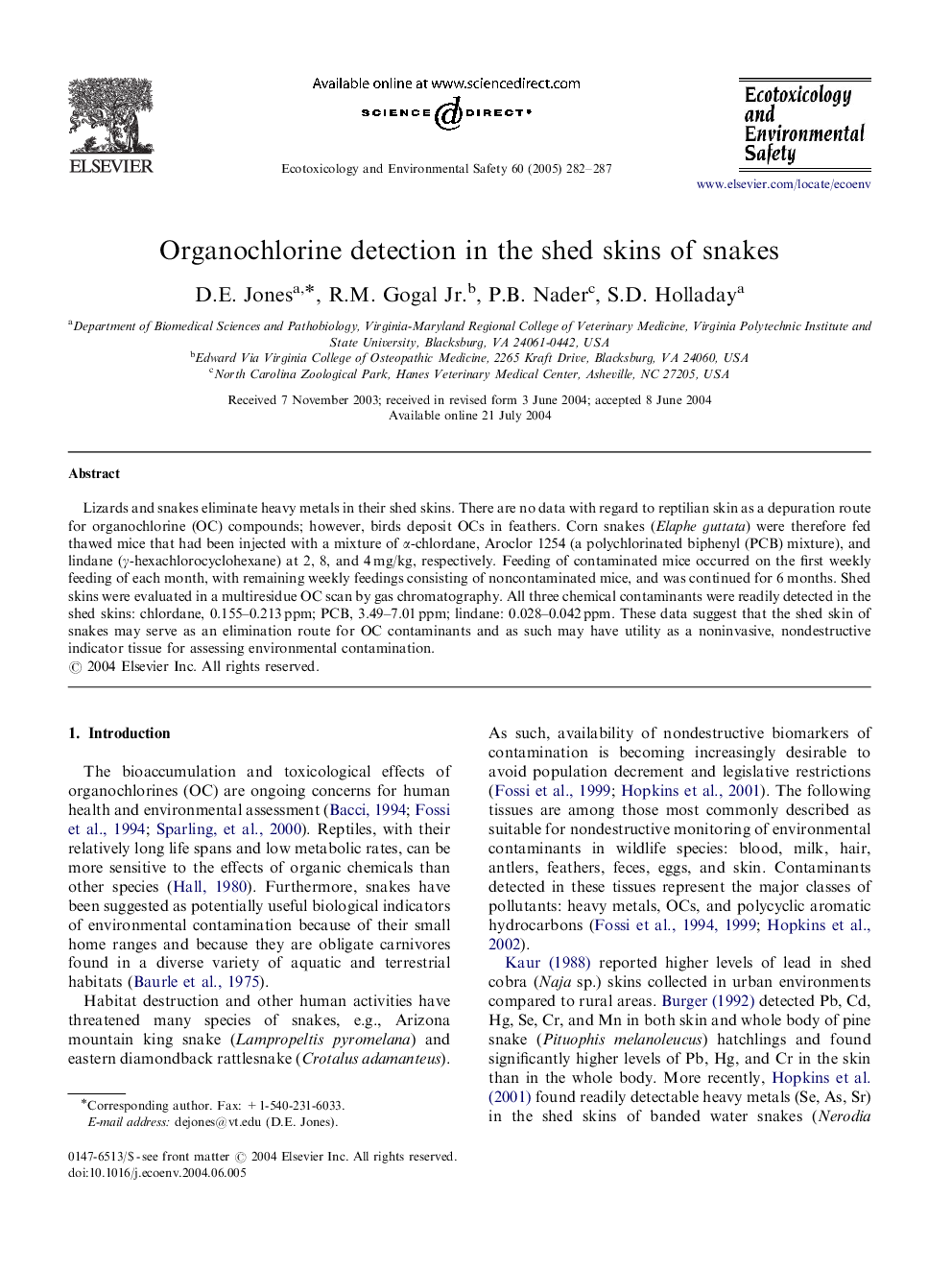| Article ID | Journal | Published Year | Pages | File Type |
|---|---|---|---|---|
| 9454756 | Ecotoxicology and Environmental Safety | 2005 | 6 Pages |
Abstract
Lizards and snakes eliminate heavy metals in their shed skins. There are no data with regard to reptilian skin as a depuration route for organochlorine (OC) compounds; however, birds deposit OCs in feathers. Corn snakes (Elaphe guttata) were therefore fed thawed mice that had been injected with a mixture of α-chlordane, Aroclor 1254 (a polychlorinated biphenyl (PCB) mixture), and lindane (γ-hexachlorocyclohexane) at 2, 8, and 4 mg/kg, respectively. Feeding of contaminated mice occurred on the first weekly feeding of each month, with remaining weekly feedings consisting of noncontaminated mice, and was continued for 6 months. Shed skins were evaluated in a multiresidue OC scan by gas chromatography. All three chemical contaminants were readily detected in the shed skins: chlordane, 0.155-0.213 ppm; PCB, 3.49-7.01 ppm; lindane: 0.028-0.042 ppm. These data suggest that the shed skin of snakes may serve as an elimination route for OC contaminants and as such may have utility as a noninvasive, nondestructive indicator tissue for assessing environmental contamination.
Related Topics
Life Sciences
Environmental Science
Environmental Chemistry
Authors
D.E. Jones, R.M. Jr., P.B. Nader, S.D. Holladay,
